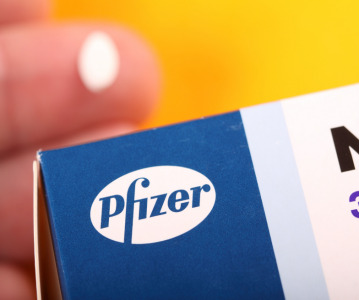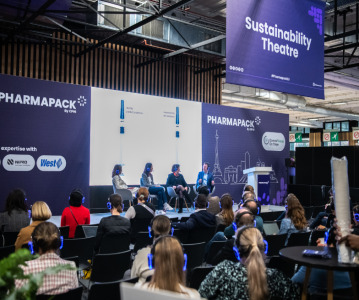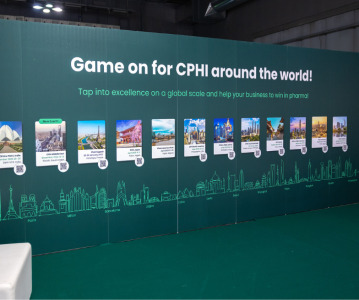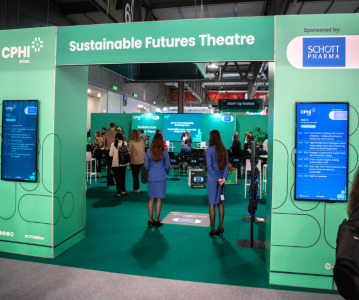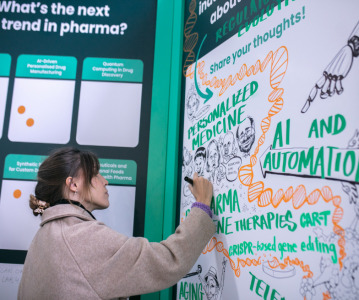I Holland woos exhibition visitors with new tabletting technologies

Company's Wear Indicator Layer attracts the most attention.
The team from I Holland has reported a very successful Achema expo in Germany this year. With thousands of visitors from around the world, the stand was overwhelmed by the positive feedback from visitors, all impressed by the company’s new tablet tooling technologies.
The product which attracted a lot of attention, and was launched during the show, was I Holland’s Wear Indicator Layer. This is an innovative coating which when applied to tooling enables tablet manufacturers to monitor tool wear helping to minimise production downtime.
Once the functional coating approaches the end of its working life cycle, a distinctive gold coloured layer is revealed allowing technicians to change tooling before production problems like sticking can take place. Sticking occurs when particles of the tablet formulation adhere to the punch face. This can become so serious that production can be interrupted, reducing yields and increasing production costs. I Holland’s Wear Indicator Layer provides a warning that tooling requires replacement before any long-term damage or delay in production can take place.
Rob Blanchard said: “Achema was a great opportunity to launch the new Wear Indicator Layer to an influential audience within the pharmaceutical industry. It received much interest from those looking to improve their tablet production methods.
“The I Holland stand was busy throughout the event, with one of the main attention-grabbing features being the live design studio. The team of design experts demonstrated how they develop tablets and tablet tooling to incorporate important features which prevent production problems like picking and sticking.
“3D CAD models and drawings of a tablet design were brought to life by transforming them into 3D printed prototypes. Visitors saw the design on the screen and then within hours were holding the finished tablet in their hand. This was a great method of showcasing the skills of our designers and giving visitors the opportunity to see how their tablets would look once produced.”
Related News
-
News Pfizer may shift production back to US under Trump pharma tariffs
At the 45th TD Cowen annual healthcare conference in Boston, USA, Pfizer CEO Albert Bourla outlined the potential for Pfizer to shift its overseas drug manufacturing back to the US as pharmaceutical industry players weigh their options against Presiden... -
News Women in Pharma: Connecting accessible pharma packaging to patients – a Pharmapack Special
Throughout our Women in Pharma series, we aim to highlight how CPHI events encourage discussions around diversity, equity, and inclusion initiatives in the pharmaceutical industry. -
News CPHI Podcast Series: Packaging expert perspectives at Pharmapack 2025
This month's podcast episode sounds a little different, covering the latest event in Paris – Pharmapack 2025. Digital Editor Lucy Chard speaks to several experts direct from the floor of the show, bringing you right in on the action.&nbs... -
News Closing 2024 with Editors' picks of top articles from the past year
Coming to the end of 2024 and it’s certainly been a busy year, for CPHI and for the rest of the pharmaceutical and healthcare industry. Topics of conversation throughout the last 12 months have been varied, touching on the technical, to the polit... -
News SCHOTT Pharma’s sustainable journey with CPHI
Sustainability is of paramount importance in the pharmaceutical industry. See how a recent partnership between CPHI and SCHOTT Pharma has helped to highlight and accelerate their sustainability journey to reach global goals. -
News CPHI Podcast Series: Investing in a vision for the future of life sciences
In this episode Lucy Chard is joined by Rajiv Khatau to discuss the importance of looking into new therapeutic areas and some of the more niche areas of pharmaceuticals, and investing in the future of the industry. -
News Lessons from CPHI Milan 2024: Sunny Intervals for Pharma Manufacturing?
As the 2024 CPHI conference wrapped up in Milan, we caught up with L.E.K. Consulting – a global strategy consulting firm with deep expertise in pharma manufacturing – to discuss evolving market perspectives and business outlook. -
News Women in Pharma: Reflections from Behind the Scenes
In this instalment of our monthly series, the team that brings you the Women in Pharma series each month sits down for a heart-to-heart on what the series means to them, and how they hope to continue their work in the future.
Recently Visited
Position your company at the heart of the global Pharma industry with a CPHI Online membership
-
Your products and solutions visible to thousands of visitors within the largest Pharma marketplace
-
Generate high-quality, engaged leads for your business, all year round
-
Promote your business as the industry’s thought-leader by hosting your reports, brochures and videos within your profile
-
Your company’s profile boosted at all participating CPHI events
-
An easy-to-use platform with a detailed dashboard showing your leads and performance
